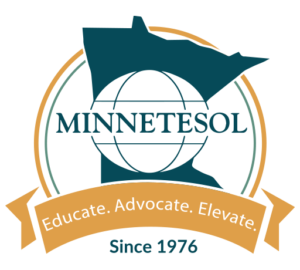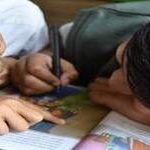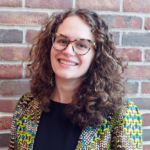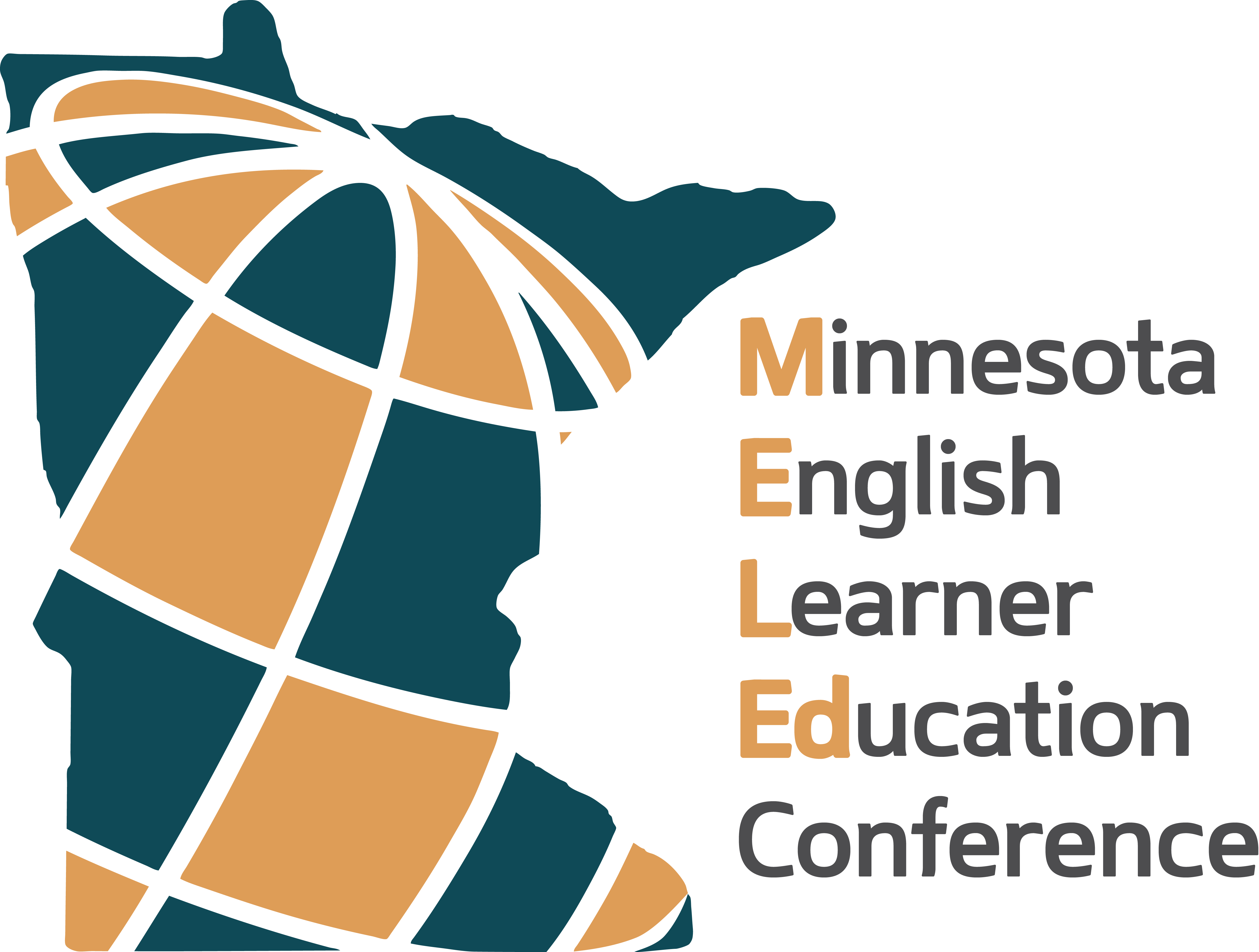The text below reviews dynamic assessment as it is applied to discerning a language difference versus a language disorder, specifically in children from culturally and linguistically diverse backgrounds. The history of dynamic assessment, basic principles, benefits and tips for application will also be discussed.
A common question that arises when school professionals evaluate the language skills of a multilingual child who is falling behind their peers is, ‘does this child have a language difference or an actual language disorder’? A true language disorder is evident in every language the child speaks and is defined as deficits in understanding others or sharing thoughts, ideas, and feelings completely (ASHA, 2017). As the professional responsible for assessing children for language disorders, speech-language pathologists (SLPs) must work alongside classroom teachers to determine if a multilingual child has an actual language disorder and truly needs special education services. Unfortunately, it is relatively common for multilingual children to be misdiagnosed with a language disorder when they are only demonstrating a language difference. According to Pieretti & Roseberry-McKibbin (2016), a language difference is illustrated by, “Differences in sentence structure, speech sound production, vocabulary, and the pragmatic uses of language that are to be expected when a child learns a new language” (p. 118). All school professionals who support multilingual children, especially English as a second language (ESL) teachers, SLPs and other members of the special education team must understand the differences between these two concepts when completing language assessments.
Identifying Language Disorders
One of the ways SLPs identify language disorders is by using language assessments to rate an individual’s performance and compare that performance to peers. If the student’s score falls a certain amount below average, they are diagnosed with a language disorder and begin receiving services from a licensed SLP. The majority of standardized language tests used for this purpose are normed using monolingual native English speakers (Paradis, Schneider, & Sorenson, 2013). Using these tests to determine the presence of speech and language disorders in children who are not native English speakers, and therefore not like the children represented in the normed sample, is difficult. Assessing the need for service is further complicated by the fact that only seven percent of certified SLPs and audiologists who are members of the American Speech-Language-Hearing Association (ASHA) are considered bilingual (ASHA, 2017).
When asked to assess a multilingual child’s language skills, SLPs must examine the process of language development, patterns of language loss, and the influence of dual language acquisition in order to identify the presence of a language difference or a disorder (ASHA, 2017). When an individual has a language impairment with no other conditions that qualify them for special education services, they are diagnosed with Specific Language Impairment (SLI) (ASHA, 2017). This diagnosis is most often given to school-aged children who struggle with receptive and/or expressive language but do not have a developmental disability like Down Syndrome or Autism Spectrum Disorder.
Processes for properly assessing English language learners (ELLs) must be developed and refined in order to prevent the under-identification or over-identification of this population, especially since the distinction between a language difference and language disorder can be a thin line. A dynamic assessment (DA) approach is one possibility for determining the presence of a true language disorder in ELLs. DA assesses the student’s ability to learn rather than measuring performance ability on a single test. In the text below, we have compiled an overview of DA, listed its benefits, and described its application in determining if an ELL would benefit from additional services.
Federal Laws and ELL assessment
Prior to diving deeper into the intricacies of DA, it is important to have an understanding of the federal laws related to ELL assessment. Both the Civil Rights Act of 1964 and the Individuals with Disabilities Act of 2004 (IDEA) require appropriate services be delivered to all students with disabilities (Liu, Watkins, Pompa, McLeod, & Elliot, 2013). Unfortunately, norm-referenced tests are still used to diagnose disorders (Petersen, Chanthongthip, Ukrainetz, Spencer & Steeve, 2017). Prezas & Jo (2017) found that many monolingual SLPs primarily rely on English assessments, which contributes to the under or over-identification of ELLs. IDEA specifically states that assessment instruments and methods used with ELLs must be unbiased and nondiscriminatory (IDEA, 2004). Hence, federal law supports the use of DA as an appropriate, non-standardized, informal assessment to evaluate ELL students (Roseberry-McKibbin, & O’Hanlon, 2005). SLPs should already be using DA methods rather than standardized tests, assessing both the learner’s native language and L2 and be working with interpreters – when needed – in determining ELLs qualification for special education services.
Dynamic Assessment: History and Basic Principals
Dynamic Assessment is based on Vygotsky’s model of cognitive development (Vygotsky, 1978), in which he claims that learning takes place in the child’s zone of proximal development (Vygotsky, 1978; Gutiérrez-Clellen & Peña, 2001). Feuerstein’s Theory of Structural Cognitive Modifiability extended Vygotsky’s theory and applied it to the formal education process (Feuerstein, 1979; Feuerstein, 1980). Feuerstein’s approach evaluated the individual’s response to a specific intervention – the ‘teach’ phase of a test-teach-retest model (Hasson, Camilleri, Jones, Smith, & Dodd, 2012) – and specifically assessed the child’s behavior during intervention. This was in contrast to the standard comparison between pretest and posttest scores (Vygotsky, 1986; Peña et al., 2006). Informed by these theoretical approaches, SLPs can determine how much instruction and support a learner needs in order to complete a task. If the child improves their performance after receiving support, and can apply what they have learned to a related task, their struggle is more likely due to a language difference. On the other hand, if the child needs consistent support and is unable to generalize, they are more likely to have a true language disorder and would benefit from special education services.
SLPs primarily use the test-teach-retest approach of DA to assess CLD students as it is better suited than standardized assessments to differentiate language differences from disorders. In this model, the child is tested to obtain baseline proficiency data of their knowledge of the material. The child then takes part in an intervention (the teaching phase of DA) and finally, completes the posttest portion. Results indicate how their knowledge and skills changed after completing the teaching phase. This method differs from a ‘teach to the test’ approach because it does not use the actual test items during the intervention phase (Gutiérrez-Clellen & Peña, 2001). Specifically, the test-teach-retest dynamic assessment (TtR-DA) approach and its application to assessing language skills in children during narrative retell tasks currently has the most support in the research. This approach will be discussed extensively in the following paragraphs.
TtR-DA utilizes mediated learning experiences (MLEs) to modify the student’s level of functioning in target areas by teaching the principles that underlie the task. Specifically, MLEs address both task-specific language skills and learning behaviors (Gutiérrez-Clellen & Peña, 2001; Lidz, 1991; Lidz & Peña, 1996). MLEs work as an accurate assessment because cognitive-linguistic interface skills (i.e. attention, memory, problem solving, fast mapping, etc.) can be shared between a person’s two languages (Cummins, 2000). For example, in a narrative task – completed in the child’s L1 with an interpreter present – where the student responds to every question with one word answers, the MLE would focus explicitly teaching them ways to expand utterances. This skill then would be reassessed in the retest section. Typically developing (TD) ELLs have the underlying cognitive skills to improve their performance after an MLE, but those with a language impairment do not. TtR-DA not only reveals the gains the child made from pretest to posttest, it also allows the SLP to formally assess the ‘modifiability’ of the child.
Modifiability is the amount of support needed for learning as well as the skills and strategies used by the child to learn new information (Peña, Reséndiz & Gillam, 2007). Through TtR-DA, clinicians are able to “measure children’s latent capacities for change instead of their ability to perform a skill at a given point in time” (Peña et al., 2007, p. 332). A child with a high modifiability score (i.e. need less support and are more responsive to intervention) who makes gains from pretest to posttest, is less likely to have a language impairment. By gathering information about the student’s ability to learn and perform, the SLP is more likely to provide an accurate diagnosis.
Test-Teach-Retest Dynamic Assessment: Benefits
TtR-DA has multiple benefits and should be a primary procedure used to assess ELLs for special education services in the K-12 setting. One benefit is the high accuracy TtR-DA has for identifying learners with and without language disorder. TtR-DA can test any student’s use of learning skills and strategies, regardless of their knowledge of the English language (Roseberry-McKibbin & O’Hanlon, 2005). This contributes to the validity and reliability of DA, as it decreases the bias of traditional testing methods that exist due to lack of student knowledge of the English language or formal test procedures.
Petersen et al. (2017), worked to determine the validity of TtR-DA as a prominent assessment measure for culturally and linguistically diverse (CLD) children. Researchers used the test-teach-retest approach and two MLEs to assess for SLI in school-aged, Spanish-speaking children. Because SLPs often credit a lack of time as a primary reason for using norm-referenced tests (Caesar & Kohler, 2007), researchers conducted assessments in English and completed real-time scoring to examine TtR-DA’s practicality (Petersen et al., 2017). After testing was completed, different researchers listened to audio recordings of the children and scored each child’s performance. There was found to be a 90-95 percent agreement between the real-time and after the fact scores (Petersen et al., 2017). The high inter-scorer reliability shows that real time scoring is effective, meaning the use of TtR-DA can also benefit the SLP or ESL teacher by saving time.
The best predictor of the presence of SLI appears to be a qualitative modifiability rating (Peña et al., 2006; Petersen et al., 2017) like a numeric rating scale for examiner effort, child responsivity and the amount of knowledge transfer demonstrated. This finding has important implications, as it may mean that underlying cognitive skills such as attention and memory have a significant impact on student performance during TtR-DA tasks. If consistently accurate results are documented using modifiability ratings to supplement other methods of diagnosing language disorders, SLPs can use modifiability scores to determine the need for service and therefore limit the number of TD ELLs receiving special education services. Other benefits of TtR-DA are that it is easily repeated and can be used to inform therapy goals (Poehner, 2008). Using an ongoing assessment approach provides clear insight into learner needs and how student learning changes over time.
The Application of Dynamic Assessment: Narrative Language Samples
Multiple research studies have examined the overall effectiveness and efficiency of using TtR-DA methods to assess CLD children’s language skills using narrative language samples.
Language Sample Basics
When a SLP completes a comprehensive language assessment, it is considered best practice to collect a language sample in the student’s native language (L1) and English (L2). The language sample is often a short, recorded session in which the child retells a story from a wordless picture book (i.e. Mayer, 1979a). This task has the potential to provide many opportunities for spontaneous language production and, therefore, is a good measure of a child’s language strengths and weaknesses. Using language samples and narrative retells to assess a multilingual child’s learning ability can be completed by classroom teachers as well as school specialists. Additionally, the format of language sampling used by SLPs is easily paired with the TtR-DA making this assessment tool extremely valuable.
When an SLP uses a language sample as a dynamic assessment measure they are able to obtain the sample in either language and ensure lack of familiarity with testing is not impacting child performance. Narratives provide additional insight into each child’s language skills and are recommended as a less biased assessment tool for ELLs as they are more realistic for collecting linguistic information (Cleave, Girolametto, Chen & Johnson, 2010). Boudreau (2007), explained that narrative development is a domain of language that children with SLI struggle with, implying that it may be a useful assessment tool to differentiate this population from TD peers. Children with SLI struggle to incorporate both the micro and macro elements of narrative retells as well as synthesize the overall production and comprehension of the story (Boudreau, 2007). Narrative assessments have high content validity because they are often a part of the school and home discourse (Peña et al., 2006). Narratives also give more insight into the child’s thought process, emerging skills, and learning potential compared to static measures. Because of these benefits, language samples and DA approaches should be combined to assess bilingual students’ language development.
Studies on Narrative Assessment
Peña, Gillam, & Bedore (2014) conducted TtR-DA of narrative ability with Spanish-speaking ELL preschool children diagnosed with SLI. Researchers used a test-teach-retest approach, short MLEs and wordless picture books (Mayer, 1979a; Mayer, 1979b). The scripted interventions focused on increasing the length and complexity of the students’ narrative retells (Peña et al., 2014). Results from this investigation indicated that two short MLEs were enough to demonstrate change in discourse ability and that children with SLI had significantly lower modifiability than the TD children (Peña et al., 2014). Overall, this dynamic approach yielded high reliability, validity and practicality when using narrative skills and modifiability scores to indicate language ability. Peña et al. (2006) also used a test-teach-retest approach with 71 CLD school-aged children, 14 of whom had SLI. Results indicated that the TD children demonstrated a larger amount of pretest to posttest change than those students with SLI (Peña et al., 2006). In addition, measures of posttest score and modifiability were found to be valid and reliable measures in determining a language disorder. The static pretest scores in this study did not produce reliable results when determining SLI (Peña et al., 2006).
Kramer, Mallett, Scheider, and Hayward (2009) implemented TtR-DA with 17 First Nations students, five of whom were labeled as ‘at-risk’ for language impairment, to discover if TtR-DA reduced unnecessary referrals for services (Kramer et al., 2009). Given this population’s long-standing cultural tradition of oral storytelling, researchers found that TtR-DA with narrative retell was deemed an appropriate assessment measure for these children. Results showed that the students with typical language learning received higher posttest scores compared to students who had possible language impairments (Kramer et al., 2009). Similar to previously discussed results, this suggests that students with language impairments have more difficulty learning and integrating new information into their narratives compared to TD peers.
There are many more studies that describe the implementation of TtR-DA principles and its effectiveness in determining language disorders in ELL students. Overall, results imply that decontextualized standardized tests are not appropriate assessments to use with ELLs as they may contain culturally-biased content and be highly impacted by a student’s lack of exposure to formal tests. Telling stories, however, is a more familiar script for most children. Therefore, a narrative assessment is a more appropriate means for ELLs to demonstrate their language skills (Cleave et al., 2010).
In the K-12 setting, educators are constantly presented with CLD learners who struggle academically and socially. When these students begin to fall behind their peers, response to intervention (RtI) programs are often implemented and the child may complete a comprehensive evaluation for special education services. In these situations, each member of the team (the general classroom teacher, the ESL teacher, the reading specialist, the SLP, and other special education staff) must work together and use ethical assessment procedures to ensure the need for services is valid. Understanding the principles of TtR-DA and how to apply them to your scope of practice is a crucial step in this team-based approach.
Reflection
As future SLPs, we plan to conduct TtR-DA when assessing ELL students for language disorders. Overall, DA is preferred to using static, formal measures as it helps SLPs accurately assess ELL students’ potential while ruling out bias due to differences in background experience (Roseberry-McKibbin, & O’Hanlon, 2005) and the influence of dual language learning. As mentioned, federal law supports the use of DA as an appropriate, informal assessment for ELL students (Roseberry-McKibbin, & O’Hanlon, 2005). These laws combined with the best current evidence support the implementation of DA practices when assessing ELLs.
Future Steps – Filling Gaps in Research and Changing Practitioner Education
When reviewing studies of TtR-DA, we discovered some gaps in the current body of research. A majority of the studies focused on bilinguals who spoke Spanish and English. While findings on Spanish-English bilingual ELLs were informative, it would be ideal if future studies examined TtR-DA application with children who spoke a variety of languages. This would ensure the effectiveness of TtR-DA regardless of L1/L2 combination. If these studies were completed, researchers and clinicians could work together to create norms for ELLs who speak different languages. This would provide SLPs with appropriate, normative cut-offs that could be used to qualify ELLs for services.
Another barrier is the lack of multilingual and culturally diverse SLPs and interpreter support in schools, causing lower quality education for many ELL children with speech and language disorders. Best practice demands dual language assessment of all bilingual children, regardless of their English proficiency (Caesar & Kohler, 2007) meaning that English speaking SLPs would benefit from trainings on how to complete appropriate assessment and intervention with interpreter support.
Unfortunately, there are still barriers that prevent the widespread implementation of DA in schools across the United States. The primary issue regrettably exists in university classrooms. According to Caesar & Kohler (2007), a majority of the SLPs surveyed did not feel that their graduate education adequately prepared them to assess and provide intervention to multilingual students. Graduate students need academic instruction and clinical training on working with ELL students to be prepared to work in a country as diverse as the United States. This finding aligns with a survey conducted by Roseberry-McKibbin & O’Hanlon (2005). In 1990 and 2001, SLPs were surveyed and asked questions about problems they encounter most frequently in the workplace and what type of continuing education classes would be of interest to them. Even though the surveys were given out 11 years apart, the top answers were similar. Both groups reported a “lack of unbiased appropriate assessment instruments” and that they would take classes focused on “assessment procedures and materials for conducting unbiased assessments of ELL students” (Roseberry-McKibbin & O’Hanlon, 2005, p. 179). SLPs need more training in their graduate careers and more opportunities for continuing education focused on working with ELL students.
Conclusion
Combining assessment and intervention processes in a single assessment method like TtR-DA has the potential to reveal differences between children with and without language impairments, regardless of their cultural and linguistic diversity. Ideally, more and more SLPs entering the workforce will understand the importance of using DA methods in their practice. The information synthesized above clearly demonstrates that TtR-DA can limit cultural biases in diagnostic procedures and improve the accuracy of classifying multilinguals with language impairments.
What does this mean for students, teachers, and SLPs? For students, the use of more valid and reliable assessment measures will limit the over and under-identification of language disorders. For SLPs, this means using an assessment procedure supported by IDEA and supporting students who truly benefit from their skilled service. For teachers, it means having reassurance that students who struggle academically truly need additional support and that it is not their responsibility to provide that support when a true disorder is evident. Additionally, all team members will learn to watch for red flags for language impairment, know when to refer for RtI or additional evaluations, and understand the TtR-DA approach and its benefits.
If you have more questions about DA, we highly advise finding your school or district SLP and engaging in a dialogue about assessing ELLs for special education services – this collaboration can only serve to support the ELL students in our K-12 classrooms.
References
American Speech-Language-Hearing Association | ASHA. (n.d.). Retrieved November 29, 2017, from https://www.asha.org/
Boudreau, D. M. (2007). Narrative abilities in children with language impairments. In R. Paul (Ed.), Language disorders from a developmental perspective (pp. 331-356). Mahwah, NJ: Lawrence Erlbaum, Associates.
Caesar, L. G., & Kohler, P. D. (2007). The state of school-based bilingual assessment: Actual practice versus recommended guidelines. Language, Speech, and Hearing Services in Schools, 38, 190-200.
Cleave, P. L., Girolametto, L. E., Chen, X., & Johnson, C. J. (2010). Narrative abilities in monolingual and dual language learning children with specific language impairment. Journal of Communication Disorders, 43, 511-522. doi: 10.1016/j.jcomdis.2010.05.005
Cummins, J. (2000). Language, power and pedagogy: Bilingual children in the crossfire.Clevendon, United Kingdom: Multilingual Matters.
Feuerstein, R. (1980). Instrumental enrichment: An intervention program for cognitive modifiability. Baltimore, MD: University Park Press.
Feuerstein, R. (1979). The dynamic assessment of retarded performers: The learning potential assessment device, theory, instruments, and techniques. Baltimore, MD; University Park Press.
Gutiérrez-Clellen, V. F., & Peña, E. (2001). Dynamic assessment of diverse children: A tutorial. Language, Speech and Hearing Services in Schools, 32, 212-224.
Hasson, N., Camilleri, B., Jones, C., Smith, J., & Dodd, B. (2012). Discriminating disorder from difference using dynamic assessment with bilingual children. Child Language Teaching and Therapy, 29(1), 57-75.
Individuals with Disabilities Education Improvement Act of 2004, 20 U.S.C. 1400 et seq. (2004) (reauthorization of the Individuals with Disabilities Education Act of 1990)
Kramer, K., Mallett, P., Scheider, P., & Hayward, D. (2009). Dynamic assessment of narratives with grade 3 children in a first nations community. Canadian Journal of Speech-Language Pathology and Audiology, 33(3), 119-128.
Lidz, C. S. (1991). Practitioner’s guide to dynamic assessment. New York, NY: Guilford Press.
Lidz, C. S., & Peña, E. (1996). Dynamic assessment: The model, its relevance as a nonbiased approach, and its application to Latino American preschool children. Language, Speech and Hearing Services in Schools, 27, 367-372.
Liu, E.W. et al. (2013). Impact: Feature Issue on Educating K-12 English Language Learners with Disabilities.
Mayer, M. (1967a). A boy, a dog, and a frog. New York, NY: Pied Piper Books.
Mayer, M. (1967b). Frog on his own. New York, NY: Pied Piper Books.
Paradis, J., Schneider, P., & Sorenson T. D. (2013). Discriminating children with language impairment among English-language learners from diverse first-language backgrounds. Journal of Speech, Language, and Hearing Research, 56, 971-981. Doi: 10.1044/1092-4388(2012/12-0050)
Peña, E. D., Gillam, R. B., & Bedore, L. M. (2014). Dynamic assessment of narrative ability in English accurately identifies language impairments in English language learners. Journal of Speech, Language, and Hearing Research, 57, 2208-2220.
Peña, E. D., Gillam, R. B., Malek, M., Ruiz-Felter, R., Resendiz, M., Fiestas, C., & Sabel, T. (2006). Dynamic assessment of school-age children’s narrative ability: An experimental investigation of classification accuracy. Journal of Speech, Language, and Hearing Research, 49, 1037-1057.
Peña, E. D., Reséndiz, M., & Gillam, R. B. (2007). The role of clinical judgments of modifiability in the diagnosis of language impairment. Advances in Speech Language Pathology, 9, 332-345.
Petersen, D. B., Chanthongthip, H., Ukrainetz, T. A., Spencer, T. D., & Steeve, R. W. (2017). Dynamic Assessment of Narratives: Efficient, Accurate Identification of Language Impairment in Bilingual Students. Journal of Speech Language and Hearing Research, 60(April), 983–998.
Pieretti, R. A., & Roseberry-McKibbin, C. (2016). Assessment and Intervention for English Language Learners With Primary Language Impairment : Research-Based Best Practices. Communication Disorders Quarterly, 37(2), 117–118. https://doi.org/10.1177/1525740114566652
Poehner, M. E. (2008). Dynamic assessment (Vol. 9). https://doi.org/10.1007/978-0-387-75775-9
Prezas, R. F., & Jo, A. A. (2017). Differentiating language difference and language disorder : Information for teachers working with English language learners in the schools. Journal of Human Services: Training, Research, and Practice, 2(1).
Roseberry-McKibbin, C., & O’Hanlon, L. (2005). Nonbiased assessment of English language learners: A tutorial. Communication Disorders Quarterly, 26(3), 178–185. https://doi.org/10.1177/15257401050260030601
Vygotsky, L. S. (1978). Mind in society: The development of higher psychological processes. Cambridge, MA: Harvard University Press.
Vygotsky, L. S. (1986). Thought and language. Cambridge, MA: MIT Press.
Recommended Additional Reading
- Dynamic Assessment Framework
- Caesar, L. G., & Kohler, P. D. (2007). The state of school-based bilingual assessment: Actual practice versus recommended guidelines. Language, Speech, and Hearing Services in Schools, 38(3), 190-200.
- Gutiérrez-Clellen, V. F., & Peña, E. (2001). Dynamic assessment of diverse children: A tutorial. Language, Speech, and Hearing Services in Schools. (32), 212–224.










